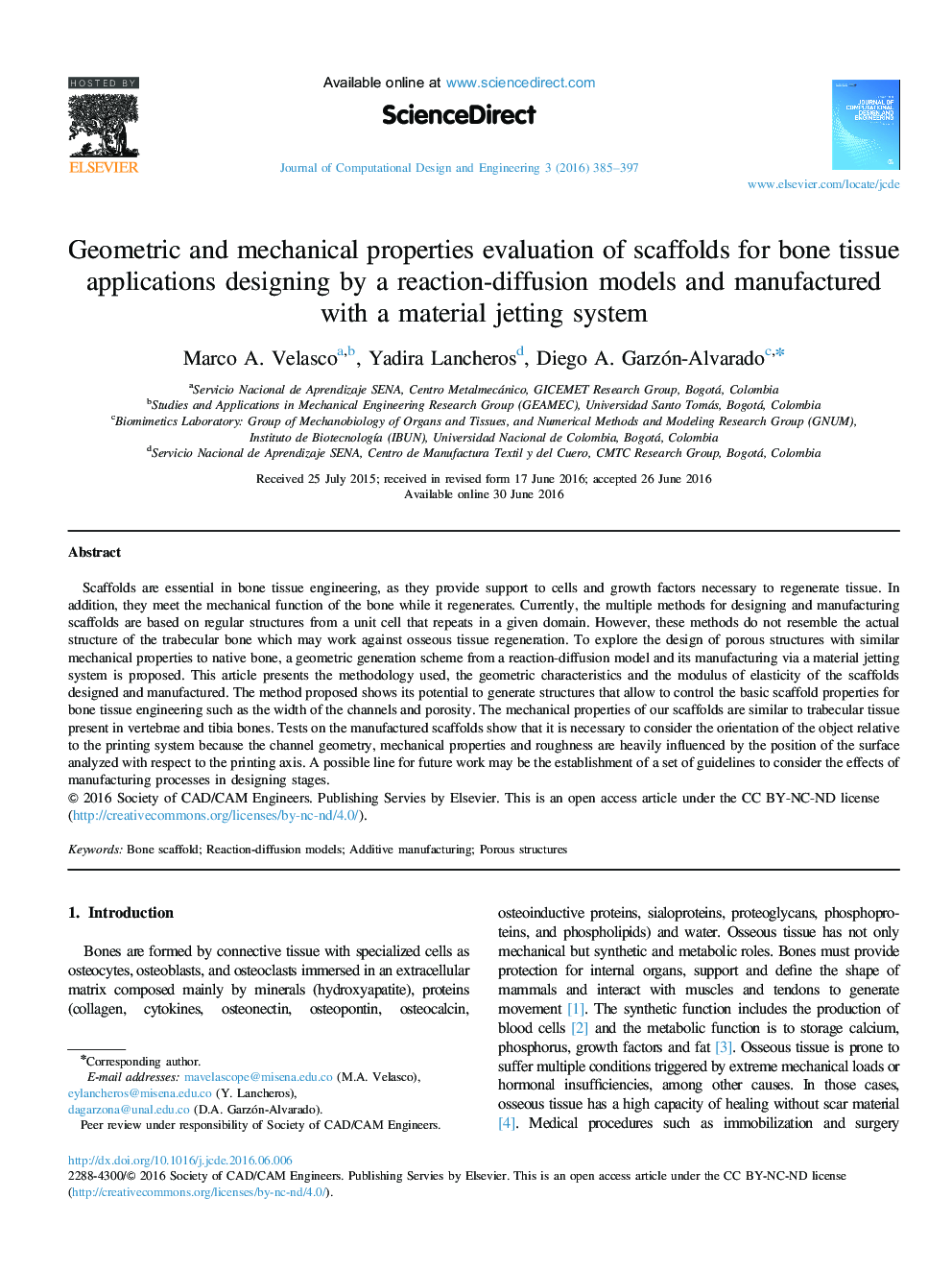| Article ID | Journal | Published Year | Pages | File Type |
|---|---|---|---|---|
| 4952978 | Journal of Computational Design and Engineering | 2016 | 13 Pages |
â¢We model scaffolds structures for bone tissue engineering using a reaction-diffusion system.â¢Geometrical properties such as channel width can be adjusted using this methodology.â¢Mechanical and geometrical features of parts made using a material jetting system are described.
Scaffolds are essential in bone tissue engineering, as they provide support to cells and growth factors necessary to regenerate tissue. In addition, they meet the mechanical function of the bone while it regenerates. Currently, the multiple methods for designing and manufacturing scaffolds are based on regular structures from a unit cell that repeats in a given domain. However, these methods do not resemble the actual structure of the trabecular bone which may work against osseous tissue regeneration. To explore the design of porous structures with similar mechanical properties to native bone, a geometric generation scheme from a reaction-diffusion model and its manufacturing via a material jetting system is proposed. This article presents the methodology used, the geometric characteristics and the modulus of elasticity of the scaffolds designed and manufactured. The method proposed shows its potential to generate structures that allow to control the basic scaffold properties for bone tissue engineering such as the width of the channels and porosity. The mechanical properties of our scaffolds are similar to trabecular tissue present in vertebrae and tibia bones. Tests on the manufactured scaffolds show that it is necessary to consider the orientation of the object relative to the printing system because the channel geometry, mechanical properties and roughness are heavily influenced by the position of the surface analyzed with respect to the printing axis. A possible line for future work may be the establishment of a set of guidelines to consider the effects of manufacturing processes in designing stages.
Graphical abstractDownload full-size image
